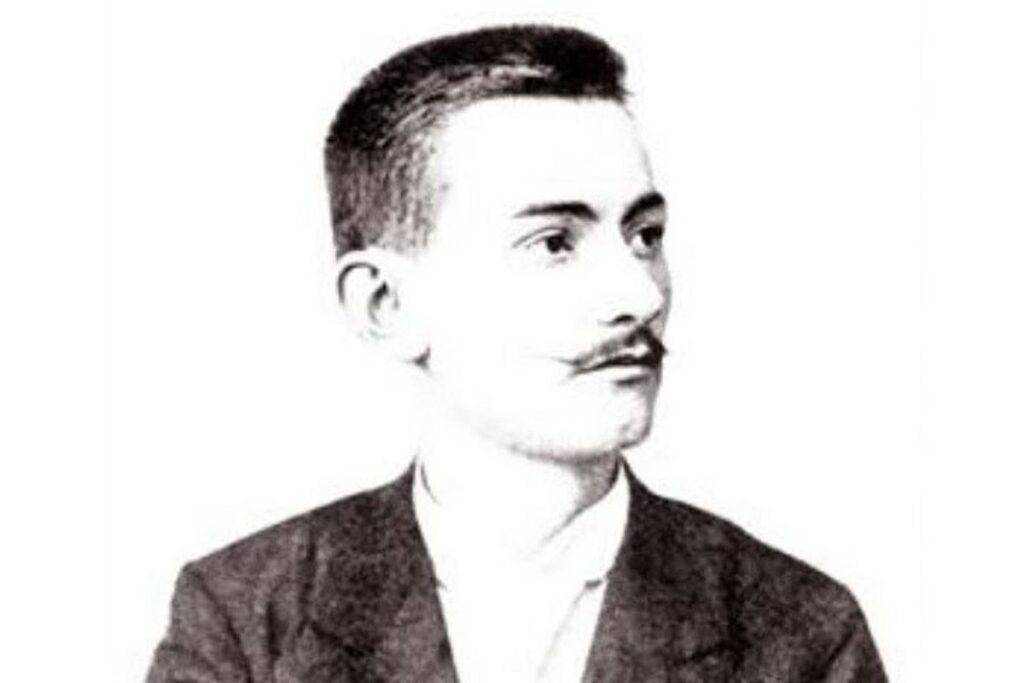Rudolf Charousek (Hungarian: Charousek Rezső) was a Czech-born Hungarian chess player, born on September 19, 1873, in Klein Lometz, Bohemia, and died on April 18, 1900, in Budapest, Hungary. Despite his short life, he was one of the top ten players in the world during the 1890s, known for his exceptional talent and brilliant games. Charousek’s career was tragically cut short at the age of 26 due to tuberculosis.
Early Life and Chess Career
Charousek’s family moved to Debrecen, Hungary, when he was five weeks old, and later to Miskolc, where he learned to play chess at the age of 16. While studying law in Kassa, he immersed himself in chess, reportedly copying out the extensive Handbuch des Schachspiels by hand due to financial constraints. Despite the lack of strong competition in Kassa, he quickly rose to prominence in the chess world.
Notable Games and Legacy
Charousek’s exceptional talent is evident in his games, with one of his most famous victories being against World Champion Emanuel Lasker in his international tournament debut in Nuremberg in 1896. Another notable game was against Wollner in Kaschau in 1893, described as “one of the prettiest ever” by Grandmaster Andrew Soltis. His brilliant and imaginative style of play left a lasting impression on the chess world, and his games continue to be studied and admired by chess enthusiasts.
What were Rudolf Charousek’s major achievements in chess?
Rudolf Charousek’s major achievements in chess include:
- Winning the international tournament in Nuremberg in 1896, where he defeated the reigning world champion, Emanuel Lasker, with the King’s Gambit
- Tying for first place with Tchigorin at the Budapest 1896 tournament, before losing the play-off match against him
- Successfully defending his first place finish at the second Berlin Tournament of 1897, solidifying his position as one of the elite class players
- Winning the first Hungarian Correspondence Chess Championship in 1893-1897, where he tied for first place with Geza Maroczy
These accomplishments showcase Charousek’s exceptional talent and his ability to achieve impressive results in a short period of time. Despite his short career, he left a lasting impact on the chess world and is remembered for his creative and strategic brilliance.
What was the impact of Rudolf Charousek’s death on the chess world?
Rudolf Charousek’s death at the young age of 26 from tuberculosis was a great loss to the chess world. He was considered one of the top ten players in the world during the 1890s, and his exceptional talent and brilliant games had left a lasting impression on the chess community.
His death was mourned by many, and his legacy as a chess prodigy and his tragically short but brilliant career continue to inspire chess players and fans.
Charousek’s death also had an impact on the chess world in terms of missed opportunities. He never reached the zenith of his powers, and it is not possible to judge what greater heights he might have reached in his art if his life hadn’t ended so soon.
His death also meant that the chess world lost a potential challenger to the reigning world champion, Emanuel Lasker, who was at the height of his powers during Charousek’s career.
Despite his short career, Charousek’s games continue to be studied and admired by chess enthusiasts. His creative and strategic brilliance left a lasting impact on the chess world, and his legacy as one of the greatest chess players of his time remains intact.
How did Rudolf Charousek’s playing style differ from other chess players of his time?
Rudolf Charousek’s playing style differed from other chess players of his time in several ways:
- Creativity and imagination: Charousek was known for his creative and imaginative approach to the game, often employing unique tactics and strategies that caught his opponents off guard.
- Attacking style: Charousek was an aggressive player who focused on attacking his opponent’s king and creating opportunities for checkmates. This approach was evident in his games against both weaker and stronger opponents, as he constantly sought to exploit any weaknesses in their positions.
- Tactical brilliance: Charousek’s tactical talent was highly developed, as evidenced by his fantastic combinations and precise execution of attacking plans. This allowed him to achieve impressive results in a short period of time, despite his limited experience.
- Endgame skills: Although Charousek was not as experienced as some of his contemporaries, he worked on improving his endgame skills, which contributed to his overall success in international tournaments.
- Influence from other players: Charousek’s playing style was influenced by his encounters with strong players from different styles, such as Makovetz, Brody, Jacobi, and Janowski. These games helped him develop and refine his own unique approach to the game.
Overall, Rudolf Charousek’s playing style was characterized by creativity, aggression, and tactical brilliance, making him a standout figure in the chess world of his time.
Conclusion
Rudolf Charousek’s legacy as a chess prodigy and his tragically short but brilliant career continue to inspire chess players and fans. His games are celebrated for their creativity and strategic brilliance, and he remains an enduring figure in the history of chess.


